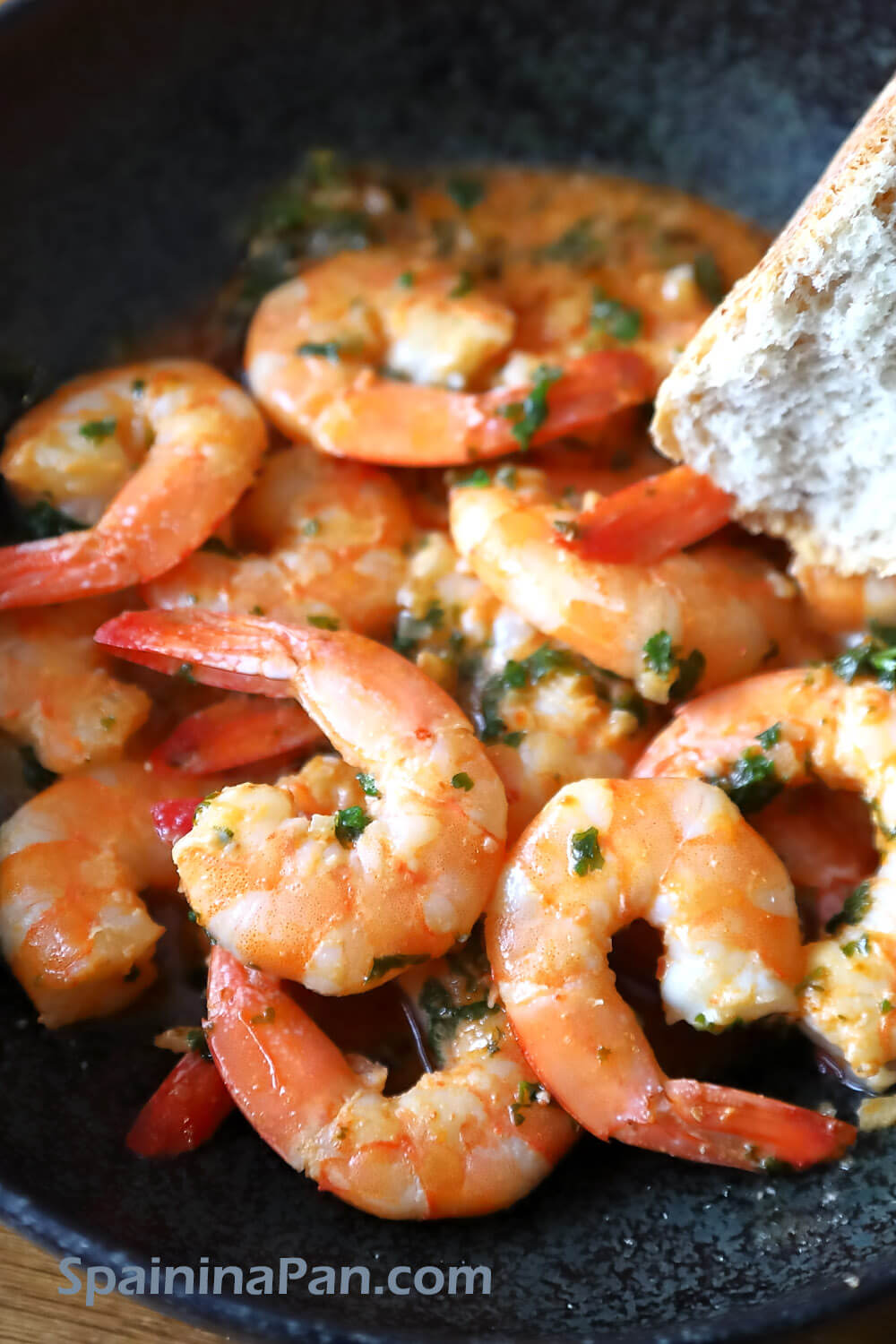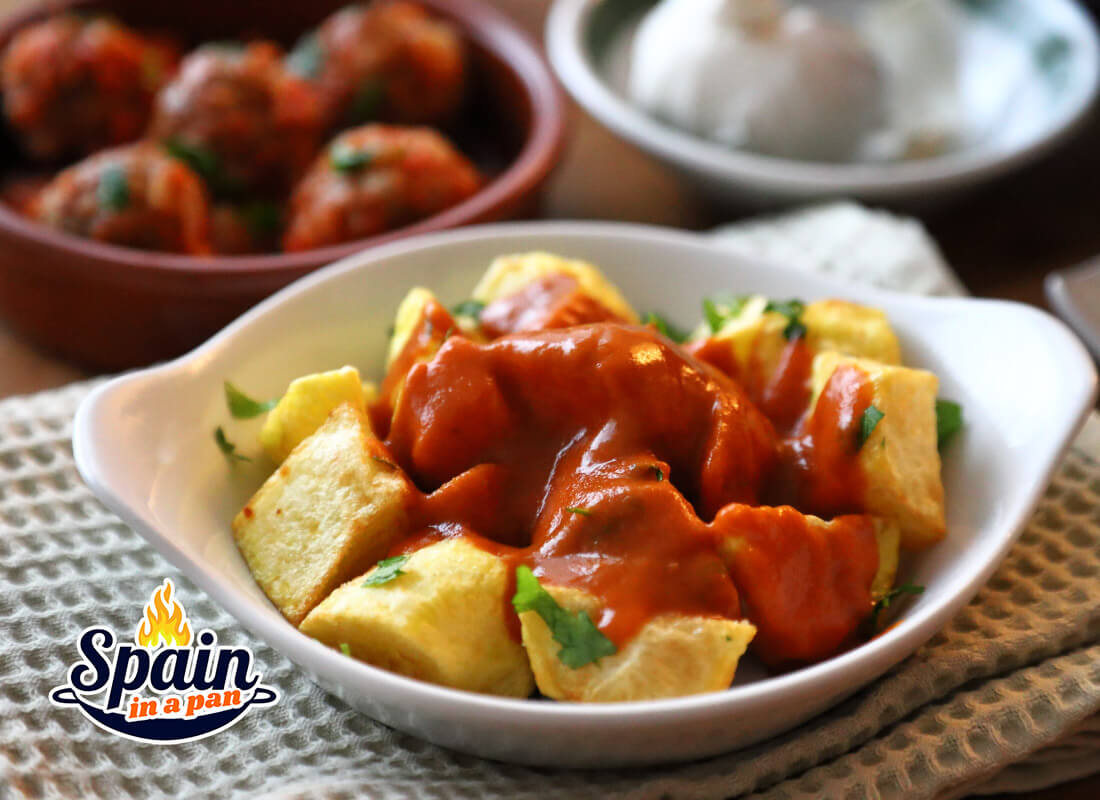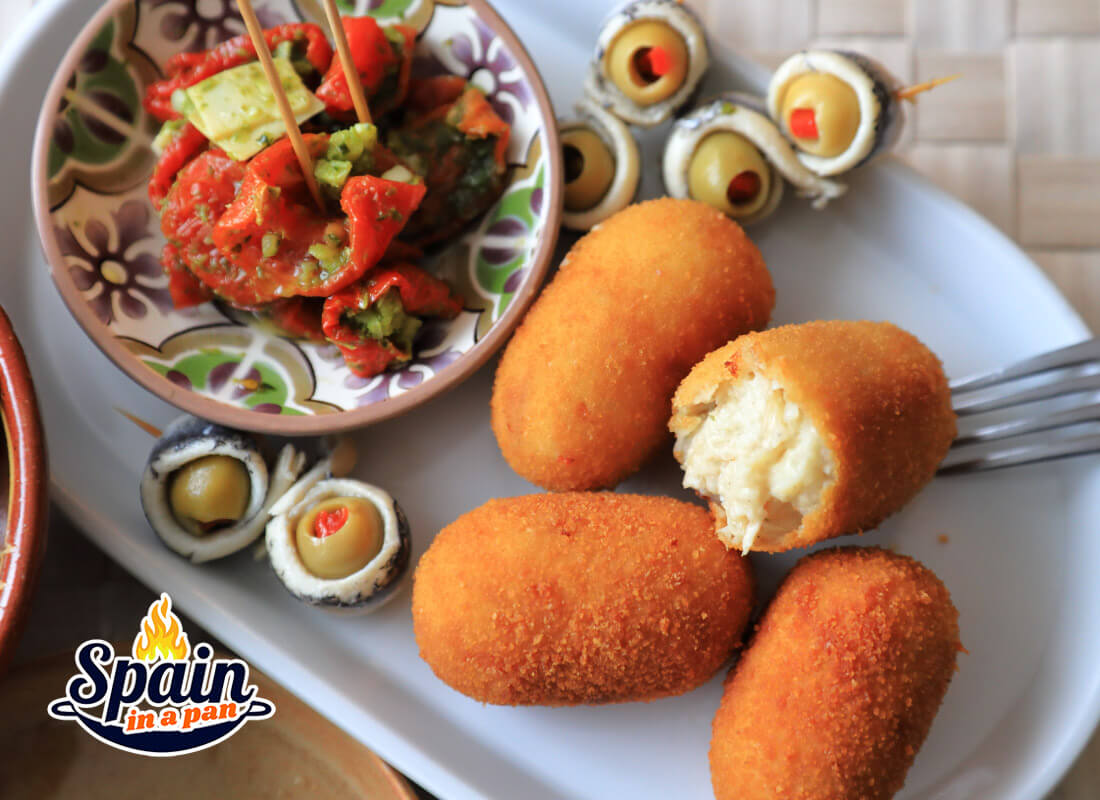- HOME
- Tapas
Easy Spanish Tapas Recipes for Every Occasion
(Recetas de Tapas)
By Edu Valor / Author - Spanish Chef
Let’s talk about Spanish tapas recipes, they're usually easy enough to make. I’m a big fan of throwing together a few small dishes, pouring a glass of wine, and calling it dinner.
The variation of small dishes makes a meal appetizing.
But before we jump into the recipes, I want to clear up a little confusion that tends to come up: the whole tapas vs. pinchos vs. montaditos thing.
So… What Exactly Are Tapas?
Today, we tend to refer to any small plate of food as a tapa. Hundreds of books on the subject show how widespread the concept is. That’s mostly fine. But in Spain, people still draw some lines in the sand.
An Asian tapa is quickly sniffed out as non-Spanish.
Traditionally, tapas are small portions of mostly cold cuts served with a drink — sometimes free (yes, really!) depending on where you are.
Some places in Granada and Jaén still keep that custom alive. Order a drink, and bam — you get a little tapa, no extra charge. Love that.
Tapas are traditionally super simple: a few slices of jamón, some (Manchego) cheese, chorizo, or olives. But today, they can also be more like mini meals: meatballs (albóndigas), Russian salad (ensaladilla rusa), Spanish omelet (tortilla española), or spinach with chickpeas (espinacas con garbanzos). It’s all fair game.
 Tuna pincho skewers with lemon.
Tuna pincho skewers with lemon.And What About Pinchos?
Ah, pinchos (or pintxos, if you’re up north in the Basque Country). These are usually little bites on bread and often held together with a toothpick.
Some folks say a pincho has to have a toothpick. Others just use the word for anything small and snacky — especially if it’s on bread. Depends who you ask.
And here’s the twist: not all pinchos have bread! A great example is the Gilda — a skewer with olives, anchovies, and pickled peppers. No bread. Still a pintxo!
The word pincho actually comes from the verb pinchar, which means “to poke” or “to skewer.” So if there’s a toothpick or a tiny skewer involved, it probably qualifies.
Montaditos? Those Too?
Yep, montaditos are another player in this little tapas universe. Think of them as small open-faced sandwiches — ingredients stacked or “mounted” (hence the name) on top of a piece of bread.
Some are like mini bocadillos, others are more like creative canapés. They don’t usually come with a toothpick, but they’re often mistaken for pinchos. Or vice versa. Again, it depends who you ask.
In southern Spain, these are sometimes just called montaditos or tostadas, especially if they’re served warm or grilled.
Let’s Be Honest — It’s All a Bit of a Maze (But a Tasty One)
There’s no one-size-fits-all definition, and that’s kind of the beauty of Spanish bar food. Every region does it their own way.
Some give you tapas for free, others don’t. Some call it a pincho, others call it a montadito. And sometimes, it’s literally just a plate of potato chips next to your beer. No complaints here.
Also worth mentioning: in some places, pinchos can refer to bigger skewers of grilled meat — similar to brochetas or pinchitos.
Especially in Andalusia, where pinchitos morunos (Moorish-style skewers) are super popular. Totally different from your bar snack pintxo. Same word, different dish.
 Tapas in Seville 2018 - after a long hike, ensaladilla rusa with tomato chipirones at bar Duque.
Tapas in Seville 2018 - after a long hike, ensaladilla rusa with tomato chipirones at bar Duque.
Going Out for Tapas – It’s a Vibe
If someone in Spain says, "Vamos de tapeo!" they don’t mean, “Let’s go eat dinner.” They mean, “Let’s go hop from bar to bar, share a few small bites, and see where the night takes us.”
It is a cherished social tradition, much like "andar de paella" (out for paella). No reservations, no big meals, just good food, conversation, and plenty of drinks.
If you’re picky, you might want to check what the bar serves ahead of time—not all offer fish tapas, for example. But there's usually something for everyone.
To me, that’s what tapas are really about. Not the labels. Not the rules. Just sharing food and enjoying the moment.
A Bit of Tapas History
There are a few origin stories floating around:
- King Alfonso X supposedly started it all. When he was sick, his doctor told him to eat small portions with wine. He liked it so much, he made it law. Legend? Maybe. But charming.
- Then there’s the “cover your drink” story — people used slices of bread or small plates to keep flies out of their wine. Over time, someone added food on top. Voilà: tapas.
- Another theory? Bars up north gave out salty snacks (like olives or anchovies) to make people thirstier, so they’d order more drinks. Now that sounds like good business.
Whatever the truth is, tapas have come a long way. These days, they’re part of everyday life — and you don’t need a fancy restaurant to enjoy them.
My Go-To Tip: Tapas at Home = Easy Wins
When I’m short on time or just don’t feel like cooking a full meal, I open the fridge and see what I’ve got: a little cheese, some olives, a few leftovers. It's usually enough to make easy Spanish tapas recipes.
I throw it all together on small plates, maybe add a toothpick or an olive for flair, and there you go — DIY tapas night.
Add wine. Call a friend. Put on some modern Spanish music and you’re basically in Spain.






